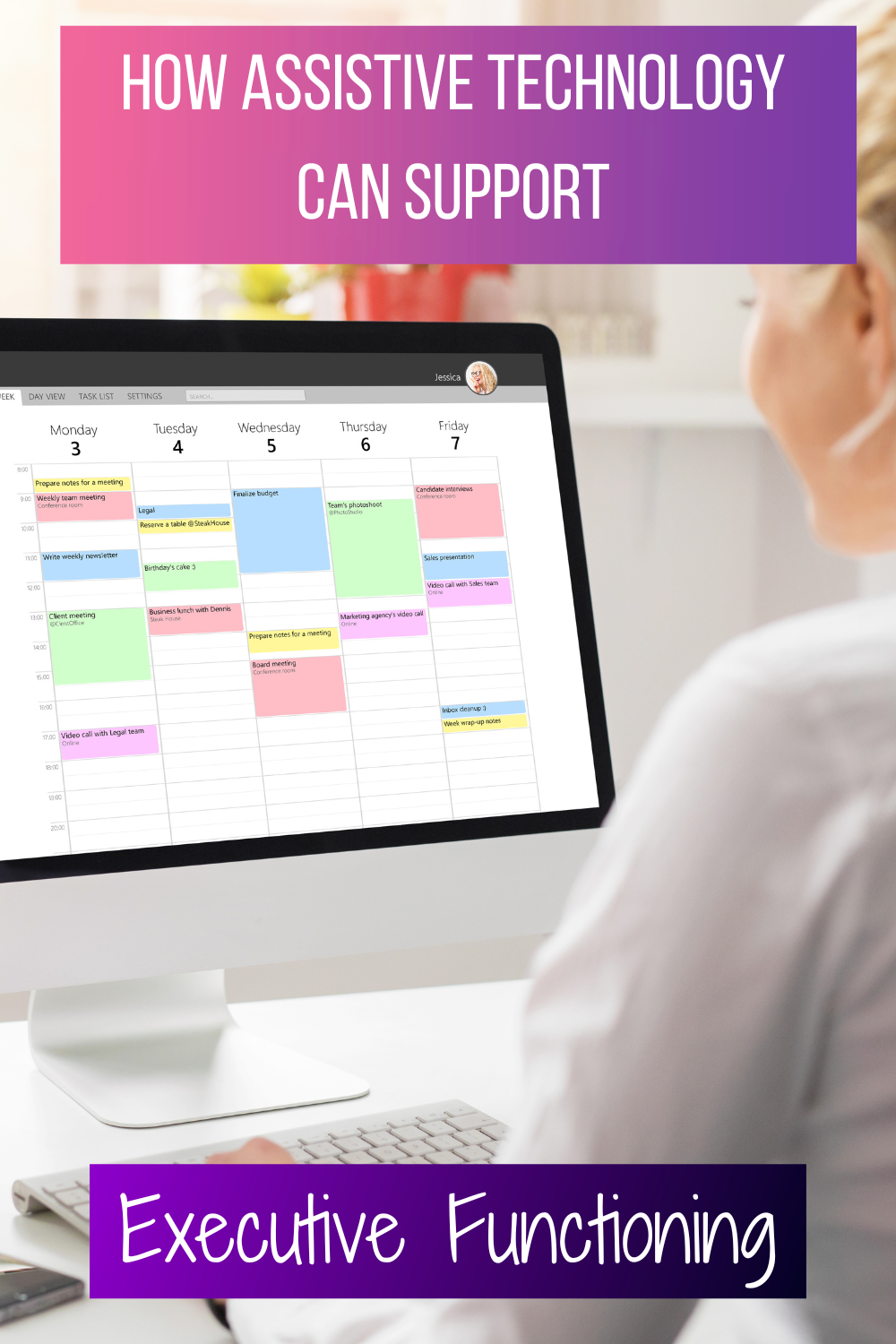5 Little Known Facts About Assistive Technology for Executive Functioning
Inside: 5 ways to use assistive technology to support students with ADHD or any student who struggles with executive functioning.
“You're so organized.”
I giggle internally as I hear this compliment.
If only they knew.
I consider myself to be a fairly organized person.
I love all things organization:
file folders
labels
color coding
post-it notes
piles of things needing to be filed
Despite the fact I have a typically clean desk, and things are filed and labeled, I still often giggle internally when people call me organized.
It took me a lot of years to figure out exactly why I found it funny.
Here is the thing: When people call me organized, I feel anything but.
I constantly feel like I'm:
forgetting something
missing something
looking for something that was just there!
Recently, I realized all of these organizational strategies and tools are things I use as accommodations.
Accommodating the Internal Chaos
If you work in the special education field, you likely have experienced an Individualized Education Plan. In this plan, specialists will write what sort of aids and accommodations are put in place to help a student be successful.
When it comes to executive functioning, there are many supports and accommodations each of us uses each and every day.
When I don't have things well organized, I can't keep up with the things I need to do.
This is what causes me to laugh when people compliment how well-organized I seem to be. I have been known to say I'm externally organized because I have a brain that is not organized.
For many of our students who struggle with executive functioning, it is the external systems and tools that can help them be more successful in our classrooms.
All students may struggle with executive functioning from time to time.
However, students identified as having ADHD or Autism may be more likely to struggle with some of these areas.
Defining Executive Functioning
Executive functioning includes all of the skills we develop to help us stay organized, plan and follow through with tasks, and manage our time.
Executive functioning is how we get ourselves together to do the things we need to do.
Read more about What You Need to Know About Executive Functioning.
Executive functioning includes:
Organization
Time management
Memory
Attention
All of these are underlying skills that are very rarely directly taught but are needed to be successful.
Defining Assistive Technology
When you hear “assistive technology”, you may think about students with disabilities. You may also focus on the word technology and think about high-tech tools such as:
Computers
iPads
Chromebooks
Phones
It's important to know that assistive technology can also be low-tech. Many of the tools for executive functioning are low-tech, including things like:
Calendars
Visual supports
Sticky notes
Color coding
Five Facts About Assistive Technology for Executive Functioning
1. Low-Tech Tools can be used as assistive technology for ADHD and executive functioning.
Many times the supports for executive functioning are so mainstream they can be overlooked when considering assistive technology for a student.
However, if a student with a disability needs the tool to be successful, the tool should be documented as assistive technology.
2. Assistive Technology can be used to support executive functioning.
Often, we think of assistive technology for things like reading, writing, or mobility. It's easy to overlook common assistive technology tools used to support executive functioning.
3. We may already be using tools to support executive functioning without realizing it.
Many professionals use executive functioning supports such as timers, schedules, or apps because they're convenient, and they help.
However, we may have never taken the time to identify the fact we could be using them as assistive technology.
Recognizing when tools could be considered accommodations, supports, or assistive technology will help remind us we could consider these supports for our students as well.
4. High-tech tools have many built-in supports for executive functioning.
Most of the technology students interact with each day has built-in features to support time management, organization, memory, and even attention:
Calendars
Timers
Reminders
Note Taking Apps
Cameras
5. Using tools to support executive functioning must be direct-taught.
When we consider the number of tools available to help with things such as organization, time management, memory, and attention, it can be hard to understand why every student isn’t using these tools.
But with such a large number of tools available, student’s can get easily overwhelmed. And when each classroom runs a bit differently, it can be even harder to select a tool that will work for a student across all environments.
This is why it is important for educators to directly teach students how to use the tools and supports available to them.
Next Steps in Using Assistive Technology for Executive Functioning
Learning about executive functioning and the age students develop each skill can help educators identify when it may be appropriate to begin to look at adding supports or assistive technology into student support plans.
Once a team is able to identify which students are struggling with executive functioning, they then can work with those students to find supports that can help students feel more successful.
Perhaps along the way, you will also find some tips and tricks to use for yourself.
And may end up giggling a little when someone tells you, “You're so organized!”
To learn more about executive functioning, sign up for our newsletter where we share tips for executive functioning, behavior, and using assistive technology in the classroom.













